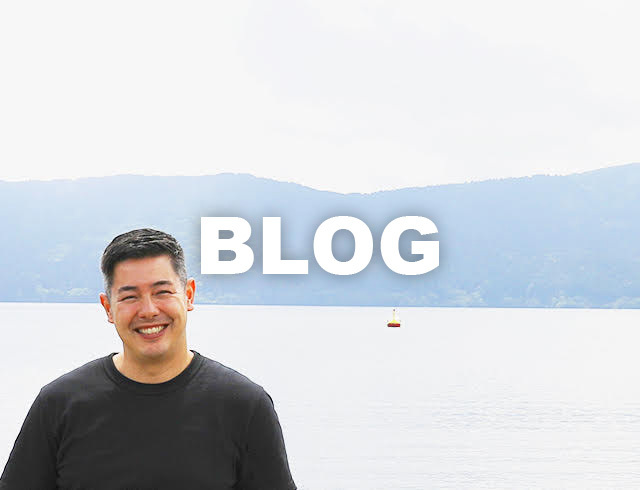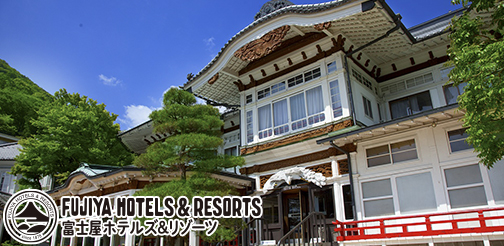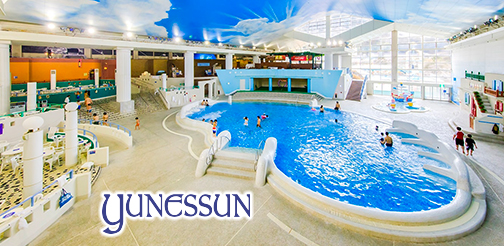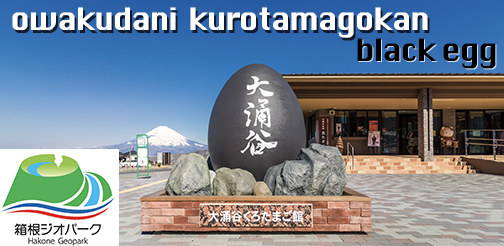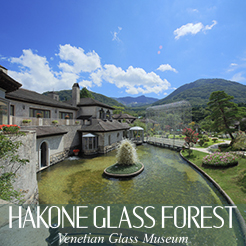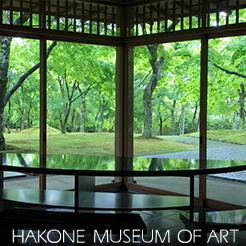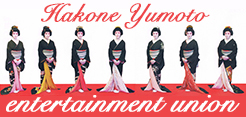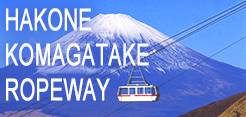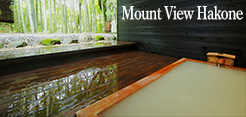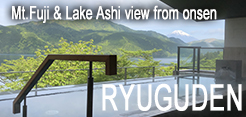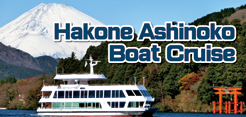History of Onsen in Japan
Japan is one of the world’s leading hot spring countries. There are more than 27,000 hot springs in Japan, and the volume of water that flows out of these springs is approximately 2.6 million liters per minute. In addition, 47% of the hot springs are higher than 42 degrees Celsius. There are about 3,085 hot spring resorts like Hakone with accommodation facilities in Japan, most of which are distributed along volcanic belts, so there is no shortage of heat sources for hot springs. Since the rainy season, typhoons, and snowfall bring large amounts of water resources to the Japanese archipelago, there is also an abundance of sources of hot spring water.
Because of this abundance of hot spring resources, the Japanese people have nurtured a unique culture of healing, bathing, and hot springs since ancient times.
Why do Japanese people soak themselves in hot water?
In an ancient text called the Izumokuni Fudoki, which is said to have been written in 733, the following is written about the Tamatsukuri hot spring in present-day Shimane Prefecture.
“In this village, by the riverside, there is a hot spring. Men and women, the elderly and the young, come and go by road or by sea along the beach. If you wash in the hot spring once, your appearance will become beautiful, and if you wash again, you will be cured of all diseases. This is why the people of the world call it the hot spring of the gods.
In Japan, bathing in water has long been thought to cleanse the body and mind. It is a form of misogi, or purification of the Shinto religion, which is unique to Japan. When important ceremonies were to be held at the Imperial Court, court nobles would wake up early in the morning and bathe in water to purify their bodies and minds before going out. This custom came down to the common people in the form of gyosui. The act of using a tub of water to remove sweat and refresh the body reflects the Japanese desire to cleanse the body and the mind at the same time.
In the middle of the 8th century, a sutra called the “Greenhouse Sutra” was introduced from the Asian mainland along with many Buddhist scriptures. This sutra teaches, in essence, that taking a bath will give you merit. Originally, misogi rituals involved purifying the body and mind with cold river, waterfall, or ocean water, but boiled water or hot springs felt much better physically. It is not hard to imagine that a scripture that said, “Bathing in hot water will give you merit, eliminate seven diseases, and bring you seven blessings,” would have been welcomed with open arms.
This fusion of the Shinto spirit of misogi and the Buddhist sutras resulted in more people who loved and appreciated the aesthetics of baths, hot springs, and cleanliness. I believe that this is how Japan’s “soaking culture,” or onsen culture, which washes away the dirt from the body and cleanses the soul, was born. I believe this is how the onsen culture was born.
Onsen as Therapy and for Health
There is a saying that “one week, one round” refers to the use of hot springs to cure illness and improve health. This is the basic unit and duration of a hot spring cure, which was established 400-500 years ago, before the Edo period.
The effects of hot springs are basically “stimulation”. The various ingredients and minerals penetrate the human body and stimulate the secretion of hormones. At the beginning of the treatment, the nervous system becomes dominant, blood pressure rises, heart rate increases, and blood sugar levels are high.
Next, the parasympathetic nervous system becomes dominant to correct this situation, resulting in lower blood pressure, lower heart rate, and lower blood sugar levels. In this way, the sympathetic-dominant and parasympathetic-dominant phases alternate, and eventually a stable equilibrium state is reached, and the body recovers.
A one-week stay in a hot spring resort will generally produce this effect. In the old days, people knew these things not by science, but by experience and tradition. In 1604, just after the opening of the Edo shogunate, Ieyasu Tokugawa, the ruler of Japan, went to Atami Onsen in Shizuoka Prefecture just over the mountains from Hakone for a one-week hot spring cure. Of course, this was in accordance with the customary practice up to that time. Hakone is also associated with another of Japan`s great founders, Toyotomi Hideyoshi. Both he and Tokugawa would have spent time in Hakone during the Siege of Odawara Castle in 1590. The area around Miyanoshita in Hakone is closely connected with the legend of Toyotomi Hideyoshi.
Goto Gonzan, the founder of scientific hot spring therapy
It was not until the Edo period (1603-1868) that doctors began to use hot springs for medical treatment. The founder was Goto Gonzan (1659-1733), a master of ancient medicine who had as many as 200 disciples. Gonzan was a pioneer of empirical medicine in Japan and a standard-bearer of the medical innovation movement.
The theory that Gonzan published is called “Iki-ryu-tai-ron. It is a theory that people become ill because of the stagnation of ki. This “ki” is the same as the “ki” of vitality, and refers to the autonomic nervous system in modern medicine. Gonzan believed that diseases could be cured by releasing stagnant ki, and he recommended taking hot springs to increase ki. The hot spring was a way to stimulate the sympathetic nervous system, and the hotter the hot spring, the more energy and motivation you will have.
The hot spring he described as “the best under heaven” was not the then famous Arima Onsen (Hyogo Prefecture), but the remote Kinosaki Onsen (Hyogo Prefecture). This was because of the high temperature. Even today, Kinosaki in the San’in region is not a hot spring resort with easy access, but since the most famous doctor of the day, Goto Gonzan, highly praised it, its fame has grown rapidly and it continues to be one of the major hot spring resorts in Japan.
Aging, Disease, and Hot Springs
In recent years, foods such as fruits, vegetables, and mushrooms have been attracting attention for their antioxidant capacity, which eliminates active oxygen (free radicals) that cause aging and lifestyle-related diseases such as cancer, hypertension, arteriosclerosis, myocardial infarction, cerebral infarction, diabetes, and obesity. Bathing in hot springs are also said to have beneficial health effects. We talk about some recent studies, but do not claim that a onsen soak can be a cure all for serious ailments or father time.
It is said that 90% of aging and diseases are caused by active oxygen. Strong ultraviolet rays, radiation, pesticides, exhaust gases, food additives, tobacco, medicines, and strong stress are the sources of active oxygen. Active oxygen causes substances to “oxidize” or rust.
Oxidation is the reason why iron rusts and fish rots. When cell membranes become rusty, they eventually corrode, damaging the DNA inside and causing cancer.
On the other hand, the opposite of oxidation is reduction, which works in the opposite way, i.e., it not only prevents aging, rusting, and decay, but also removes rust from human cells, activates them, and rejuvenates the skin, for example. The reason why onsen have been called “rejuvenation baths” in Japan and Europe since ancient times is because of their “reducing power”. In other words, bathing in an onsen can reduce rusty skin to a shiny new state, rejuvenate the skin, and improve one’s appearance, as described in the “Izumokuni Fudoki.
Before gushing out to the surface of the earth, hot springs have the characteristics of a “reducing system,” and it can be said that the scientific essence and value of hot springs lies in their reducing effect. The reducing effect is the function of reducing and activating our cells, which are oxidized and rusted by active oxygen and can lead to serious diseases if left untreated. It also has an “antioxidant effect” that prevents oxidation.
When time passes after a hot spring gushes to the surface, or when chlorine chemicals are mixed in for sterilization, it immediately undergoes chemical changes and becomes an oxidizing agent. Once oxidized the reducing and antioxidant effects do not work. That is why many onsen in Hakone are touted as “kake nagashi”, or free flow hot springs.
There are more than 90,000 kilometers of blood vessels in our body, which is equivalent to two and a half times the circumference of the earth. As long as we are healthy, the blood flowing through these blood vessels is weakly alkaline. The urine that is discharged from the body is also weakly alkaline. Fruits and vegetables contain antioxidants, but the amount consumed by people today is decreasing year by year. On the other hand, we continue to consume a lot of animal protein such as meat and dairy products and processed foods, most of which are oxidized foods.
The reason why onsen has been able to make Japanese people healthy physically and mentally, and to cure diseases, is because of its reducing power to reduce our oxidized cells. In the future, if hot springs are required to play a role that cannot be played by modern medicine that focuses on symptomatic treatment, especially as a preventive medicine, then hot springs that are fresh have excellent reducing power that can eliminate and inhibit active oxygen that will be able to fulfill this role.
Of these, hot springs that are free-flowing from the source are the ones with the most effective rejuvenating powers. The source is the hot spring water that has not been heated or watered, but is still gushing out of the ground. When fresh source water is rinsed and overflowing out of the bathtub, it is called “onsen kake nagashi,” or “flowing at the source.” Hakone is known as an onsen theme park because of the wide variety of water types and temperatures found throughout the area. We welcome you to experience this part of Japanese history and culture in the Hakone area.

